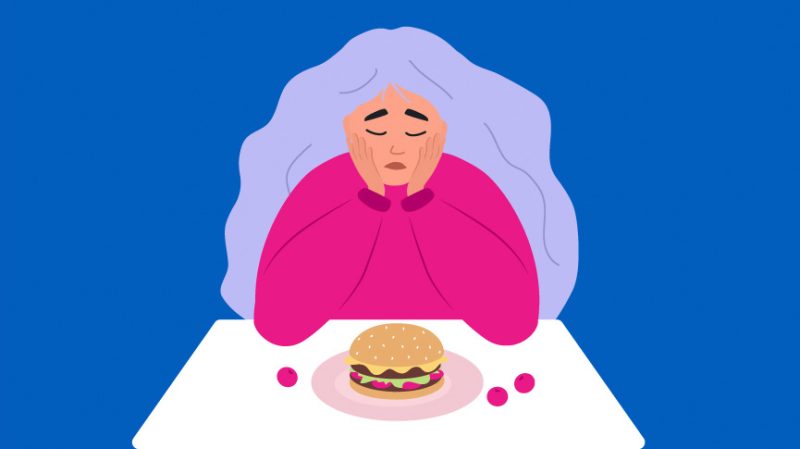Why Are Eating Disorders On The Rise?

From 2018 to 2022, health care visits for eating disorders in Americans younger than 17 spiked by an astounding 107.4%, and visits for anorexia nervosa increased by 129.26%. In the United Kingdom, researchers report that eating disorders among girls aged 13-16 were 42.4% higher than previous norms and 32% higher for girls in the 17-19 age bracket. Similar increases were also reported around the EU.
So, why is this troubling trend of eating disorders rising across Western nations occurring? Like with most mental health disorders, there isn’t one acute cause to pinpoint. However, factors such as isolation during COVID-19 and social media may compound the issue.
In this article, we discuss the impact of COVID-19 induced isolation and social media on self-image, and briefly touch on whether or not the trend may also be partially attributed to more people being open about eating disorders.
COVID-19 Isolation Resulted in Unhealthy Coping Strategies
The COVID-19 pandemic and the isolation and fear it brought has unsurprisingly resulted in a significant increase in mental health disorders across the board. Eating disorders are often used as an unhealthy coping strategy for fear or stress, and worsen during such times. Plus, isolation due to lockdown and limited social options provide the ideal environment for people to hide their eating disorders.
In 2020 alone, hospitalizations for eating disorders doubled, and we must wait until the future to assess the full scope of the damage that the pandemic has done to mental health can only be assessed in the future.
Children and teens are especially vulnerable to eating disorders like bulimia, anorexia, and binge eating disorder, with pediatricians in the U.S. noting a large uptick in the number of children being referred to eating disorder programs. Since children and teens haven’t had time to develop coping mechanisms like adults do, and social interaction is even more crucial for developing minds, fear and isolation hits them particularly hard.
Social Media Misrepresenting What “Normal” People Can Look Like
In the eras before social media made it so that anybody with a Smartphone and a work ethic could become an influencer, models, actresses, and the occasional Paris Hilton-esque socialite were the primary setters and enforcers of the beauty standard.
There was still a sort of separation between what the “normal” body of what the average person may see at the grocery store or at the beach looked like, and what people who had substantially more fame and money (or were genetically blessed enough to land on the cover of Vogue) represented. Now, much of the fashion and beauty industries have shifted from top-down channels to a semi-democratized model of Influencers selling idealized lifestyles to their niche audience.
On a micro level, influencers are powerful because they appear to be people who could be in your peer group. Micro-influencers who create relatable, everyday fitness, cooking, or beauty content gain power from the intimate nature of social media; you feel like these are people you know or that you could potentially become.
Few people realistically aspire to lives like Naomi Campbell, Kate Moss, or Winona Ryder, but micro-influencers share their everyday routines and lives on TikTok and Instagram make it seem like you, too, could look like them if you did the same thing. Non-medical fitness advice can turn into orthorexia and other types of body image disorders, particularly for susceptible young girls.
On a macro level, social media’s visual nature has literalized the marketing power of self-transformation. Take the case of the Kardashians. The Kardashian empire, helmed by Kim and expanded through Kylie and Khloe, has perfected how to set beauty standards through physically transforming their appearance, and then selling products to women who try and meet them. Kim and her sisters initially found fame through popularizing Black and Brown beauty standards as Caucasian novelties; Kim was the poster child for 2010s “curvy” women and set the precedent for Brazilian Butt Lifts.
When she stepped out blonde and dramatically thinner at the Met Gala in 2022 (publically starving herself to fit in Marilyn Monroe’s dress, who ironically is often used as a nostalgic example of curvy beauty), the world was watching her third act. Unfortunately, just as BBLs exploded in the wake of her improbable curves, many followers may now be taking extreme measures such as weight loss drugs to slim down.
More People May Self-Report or Acknowledge Eating Disorders
One positive aspect to consider in the unfortunate spike in self-reported eating disorders – especially among young men – may be attributed to current society being more accepting of open discussion about the topic. Whereas eating disorders were much more taboo in previous generations, many of today’s youth have turned to social media to share their experiences, and being able to hear and see peers speak about their experiences may lead to more widespread acknowledgement of eating disorders.
The positive flip side of social media platforms like TikTok is that more people may connect with others in recovery, relate to their story, and be able to acknowledge their illness and seek help. While it has generally been less acceptable for men to discuss eating disorders and self image since they run the risk of appearing “weak” or “less masculine,” one in three people struggling with body image issues are male, and males account for 10% of anorexia and bulimia sufferers.
As we become more open as a society regarding the discussion of male body image, it is possible that the increase in eating disorders among young men is due to them being more willing to acknowledge and report their disease.








